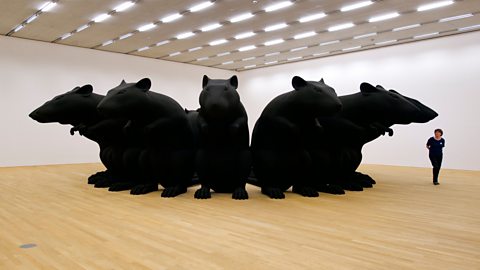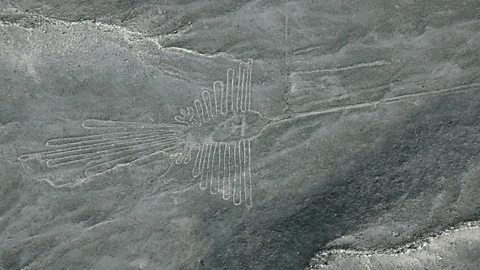Scale
Scale refers to the overall physical size of an artwork or objects in the artwork.
An artist may decide to use a scale which is different from life-sized and this will have an impact on how the artwork feels.
Large scale
An artist may create an artwork that is much larger than it would be in real life in order to create a visual impact.
There are many artists who create artworks that use scaled-up objects.

Katharina Fritschâs Rat King (1993) has scaled up a group of rats in order to increase the impact of her sculpture. The rats are twice the height of a person.
Their size makes them seem monstrous and combines with their posture to make them feel threatening to the viewer.
Artists can use the land and environment around them to create pieces of work on a monumental scale.
One of the earliest examples of land art is seen with the Nazca Lines in Peru (between 500BC and 500AD). These ancient artworks were made by digging troughs into the ground to expose lighter stones and pebbles below.

This stylised drawing of a hummingbird has a relatively simple design but, at over 90 metres long, it has a dramatic impact because of its scale.
The reason this image was created is unknown but its scale suggests its importance, as a significant amount of effort and skill was needed to create it. This is made all the more impressive when you consider that there was no way for the creators to see the finished artwork which can only be seen from the air.
Small scale
When artists create work on a miniature scale, impact is often created through the level of detail and skill involved.

This prayer nut was created by Adam Theodrici between 1500 â 1525. It measures less than 5cm across and would have been hung from a chain of rosary beads.
The intricate carving has been created with a great level of skilled craftsmanship. This work would have been time consuming and expensive.
This object would have clearly signalled the wealth of its owner.
